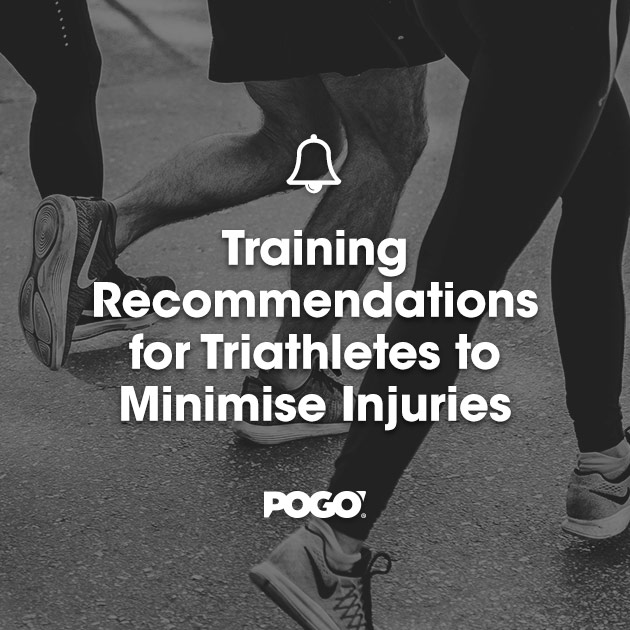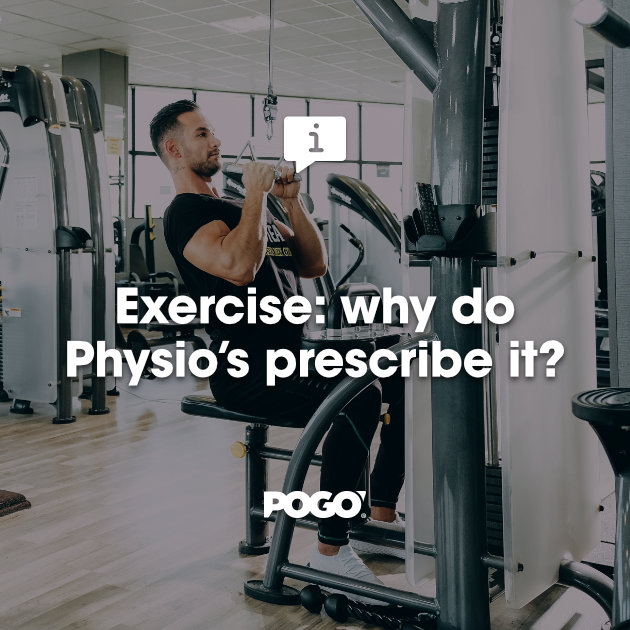What to Eat when you’re Injured
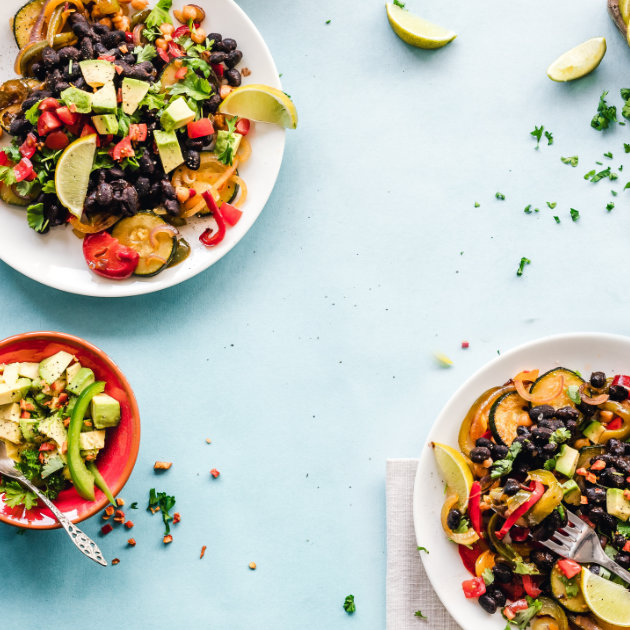
If you’ve ever been injured, especially when preparing for an event or competing in a competition, you usually want to return to your activity or sport as soon as possible. Lots of recovery methods are considered when nursing an injury. These include: medication, physiotherapy, massage, stretching, strengthening and surgery. However, one method you may have not considered is your diet.
Inflammation
Inflammation is the body’s response to any kind of trauma. Injuries, infection, temperature, chemicals, even intense workouts result in an inflammatory reaction within the body (3)(8). This reaction is imperative to our health as it isolates the foreign or harmful substance from further contact to other tissues of the body (6). Inflammation also attracts our white blood cells that remove germs or dead/damaged cells from the area – effectively healing the trauma (6).
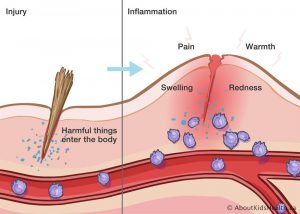
So if inflammation is so good then why’s my ankle so stiff and painful?
Well, the influx of these white cells and fluid into the area of injured tissue result in the compression of nerves and the release of chemicals within the area – resulting in pain (6)(7). As for the lack of movement, this is due to the build up of fluid called “swelling” (6)(7). Both responses are part of the initial phase of the healing process and are vital in protecting the injured tissue from further damage (6)(7). For example, in the ankle, it restricts movement or makes movement painful so you put less weight on it to allow the injured tissue to heal.
However, at times, the body’s response can be excessive or longer than it needs to be – this is called chronic inflammation (6)(7). This is why someone 6 weeks after an ankle sprain may still experience reduced movement or persistent pain in the area. Chronic inflammation isn’t exclusive to the ankle however – it is also partly responsible for conditions such as cancer, heart disease, diabetes, arthritis and Alzheimer’s (3).
So I have unnecessary inflammation, how do I get rid of it?
There are many ways to remove unwanted inflammation. Anti-inflammatory medication, massage, taping, exercise, resting, icing, elevating and compressing the area are methods commonly considered by both health professionals and the general population. However, a technique not often considered is nutrition.
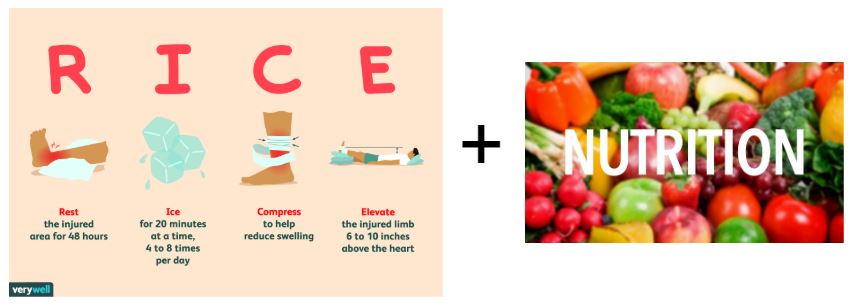
1. Antioxidants
Reactive Oxygen Species (ROS) are a byproduct of cell breakdown (3). Following an injury or a long period of intense exercise without correct recovery, high amounts of ROS are produced within the body (3). The best way to counteract this build-up of ROS are antioxidants and thus have been included within the “anti-inflammatory super-food list”(3). These break down ROS into less harmful byproducts that are no longer damaging to cells (3). So, following an intense workout or having excess inflammation – a diet containing high levels of antioxidants would result in a faster recovery as well as a reduced risk of injury. However, there are many different foods that provide benefits to someone’s recovery.
2. Vitamin C
Vitamin-C rich foods help the body produce collagen – a vital rebuilding tissue following injury (9). Vitamin-C also helps prevent chronic inflammation that could potentially slow down your recovery (9). Some examples of these foods are shown in table 1.
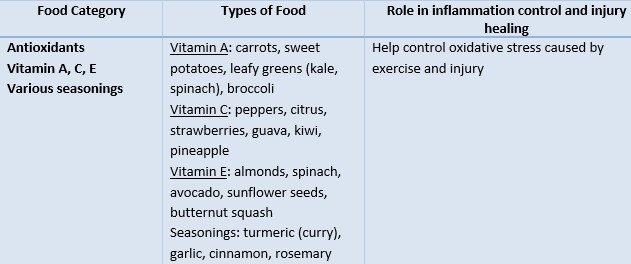
3. High Quality Protein
Unsurprisingly, protein-rich foods also make the list. These foods are largely responsible for building or rebuilding muscle tissues in the body. Following an injury, immobilisation and disuse often results in a decline in muscle mass and strength (9). To combat this, an increase of protein in your diet would prove useful – particularly when returning to training to help rebuild the lost muscle (9).
Nitrates are one of the only ways we can increase our energy levels (ATP) without increasing oxygen consumption (5). This means more healing and work can occur with the same amount of oxygen (5). Having a good intake of nitrates in your diet can also increase your nitric oxide which decreases your blood pressure – particularly helpful for those with obstructive sleep apnoea and/or hypertension (5). It has also been shown to improve blood flow to the brain and raises the question “does nitrate rich food benefit individuals with dementia or post-stroke?” (5).
4. Nitrates
Ultimately, nitrate rich foods have been shown to decrease blood pressure, increase blood flow to the brain and improve one’s energy efficiency – and therefore has been included on the list of these injury recovery superfoods.

5. Anthocyanin
The vibrant colours found in fruit and vegetables are due to their vitamin and mineral makeup (10). The naturally purple or blue pigment in foods are due to their high levels of anthocyanin – a type of antioxidant (2). Anthocyanin has been proven to have consistently proven to reduce inflammation and benefit many chronic inflammatory conditions (2). Examples of these foods are below.
6. Vitamin D
Vitamin-D has been shown to increase an individual’s chances of a good recovery from surgery such as an ACL repair (9). This vitamin also helps the body absorb calcium that is found in the foods we eat – making it, along with calcium, particularly important for recovery from fractures (9).

7. Omega 3
Omega-3 fatty acids have been proven to speed up your recovery by limiting excessive or chronic/prolonged inflammation while omega-6 fats have been shown to promote inflammation especially when omega-3 fatty acids is low (4)(9). Examples of these are shown in table 5.

Inflammatory Foods
If you’ve noticed that there are food types not mentioned above that you have in your diet – then you are not alone. While there are lots of beneficial foods to reduce inflammation there are also those that are detrimental rather than beneficial for the healing process. It could be argued that foods containing saturated fat, high levels of sodium and added sugar or preservatives increases your chances of developing various chronic diseases is common knowledge. Then, based on the same premise, these foods would also play a role in the development or retention of chronic inflammation following an injury. This, as a result, would delay your recovery to doing the active things you love.
If you are recovering from an injury (or want to prevent chronic diseases), these are the foods you should try to avoid or have in moderation:

Best to eat for each injury type
From all this information it is clear that there’s a wide range of foods that will improve recovery from a range of injuries or health conditions. Below I have made a list of injury types and their “best to eat” counterparts to optimise recovery. Please keep in mind these are generalised and discussing which of these dietary options would optimise your own recovery with a health professional is encouraged.
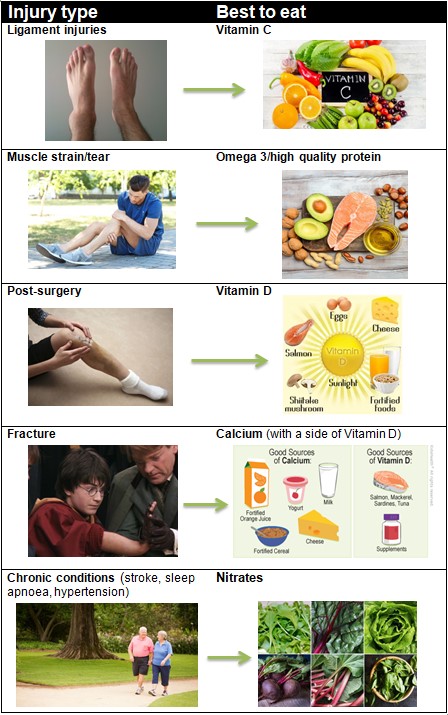
In summary
Nutrition’s impact on the human body’s function is a concept that has been researched and explored for many, many years. While the ideology of “what to eat when you’re injured” may be less explored, its summary is just like most health topics when nutrition is in question, that being: a balanced diet that supplies the body with the healthy nutrients it needs is best for the body’s organs and tissues to work as optimally as possible.

Alec Lablache
POGO Physiotherapist
Featured in the Top 50 Physical Therapy Blog
References
- Buschmann, J. (2018). Anti-Inflammatory Foods: Injury Healing Through Nutrition. Retrieved from https://www.nationwidechildrens.org/family-resources-education/700childrens/2018/03/anti-inflammatory-foods-injury-healing-through-nutrition
- Food Revolution. (2018). 10 Powerful Purple Vegetables You Should Be Eating — and Why. Retrieved from https://foodrevolution.org/blog/purple-vegetables/ (food rev)
- Harvard Medical School (2018). Foods that fight inflammation. Retrieved from https://www.health.harvard.edu/staying-healthy/foods-that-fight-inflammation
- Hill, S. (2018). Why you should consider shifting from animal to plant protein. Retrieved from https://plantproof.com/animal-protein-and-disease/
- Kerley, C. (2017). Nitric Oxide & Dietary Nitrate: Another Reason to Eat Your Vegetables. Retrieved from https://nutritionstudies.org/nitric-oxide-dietary-nitrate-another-reason-eat-vegetables/
- MedlinePlus. (2019). Immune response. Retrieved from https://medlineplus.gov/ency/article/000821.htm
- Nationwide Children’s. (n.d). Swelling: The Body’s Reaction to Injury. Retrieved from https://www.nationwidechildrens.org/specialties/sports-medicine/sports-medicine-articles/swelling-the-bodys-reaction-to-injury
- Oz, H. S. (2017). Nutrients, infectious and inflammatory diseases. Nutrients, 9(10), 1085. doi:10.3390/nu9101085
- Petre, A. (2017). The Top 14 Foods and Supplements for Sports Injuries. Retrieved from https://www.healthline.com/nutrition/foods-supplements-for-sports-injury#section4
- Ward, S. (2016). Recover from injury faster with these healing food. Retrieved from https://www.nuffieldhealth.com/article/recover-from-injury-faster-with-these-healing-foods







